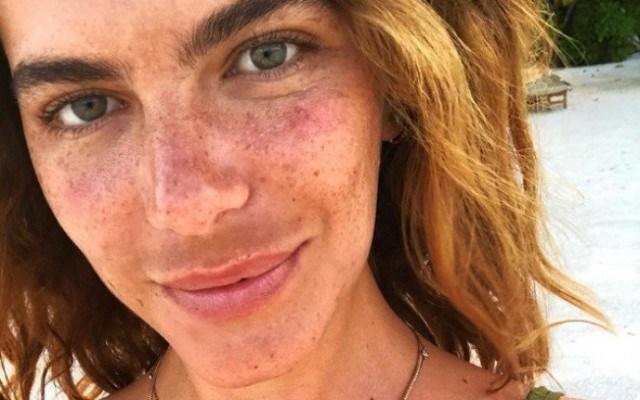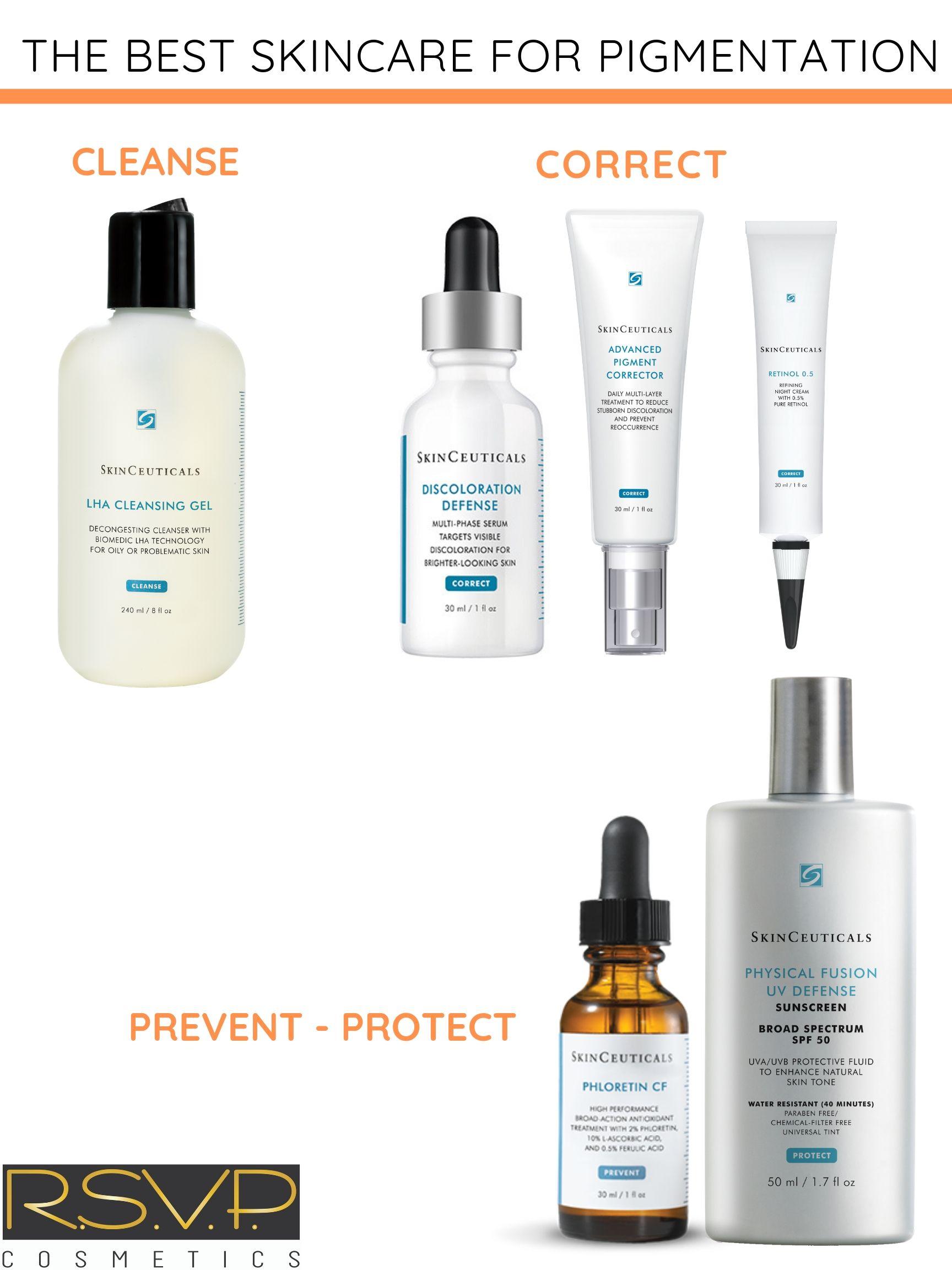
What is melasma?
Melasma is a common skin problem. It causes brown to gray-brown patches, usually on the face. Most people get it on their cheeks, bridge of their nose, forehead, chin, and above their upper lip. It also can appear on other parts of the body that get lots of sun, such as the forearms and neck.
One of the most common treatments for melasma is sun protection. This means wearing sunscreen every day and reapplying the sunscreen every 2 hours. Dermatologists also recommend wearing a wide-brimmed hat when you are outside. Sunscreen alone may not give you the protection you need.
Women are far more likely than men to get melasma. It is so common during pregnancy that melasma is sometimes called “the mask of pregnancy.” Hormones seem to trigger melasma.
Signs and symptoms
Common signs (what you see) of melasma are brown or gray-brown patches on the face. These patches most commonly appear on the:
- Cheeks.
- Forehead.
- Bridge of the nose.
- Above the upper lip.
- Chin.
Some people get patches on their forearms or neck. This is less common. Melasma does not cause any symptoms (what people feel). But many people dislike the way melasma makes their skin look. If you dislike these patches, sun protection and treatment can help.
Who gets melasma?
Melasma appears on women’s skin much more often than men’s skin. Just 10% of people who get melasma are men. People with darker skin, such as those of Latin/Hispanic, North African, African-American, Asian, Indian, Middle Eastern, or Mediterranean descent are more likely to get melasma. Brazil has the highest rates of melasma worldwide.
What causes melasma?
What causes melasma is not yet clear. It likely occurs when the color-making cells in the skin (melanocytes) produce too much color. People with skin of color are more prone to melasma because they have more active melanocytes than people with light skin. Common melasma triggers (what starts it) include:
-
- Sun exposure: Ultraviolet (UV) light from the sun stimulates the melanocytes. In fact, just a small amount of sun exposure can make melasma return after fading. Sun exposure is why melasma often is worse in summer. It also is the main reason why many people with melasma get it again and again.
- A change in hormones: Pregnant women often get melasma. When melasma appears in pregnant women, it is called chloasma, or the mask of pregnancy. Birth control pills and hormone replacement medicine also can trigger melasma.
- Skin care products: If a product irritates your skin, melasma can worsen.
How do treat melasma?
Melasma can fade on its own. This usually happens when a trigger, such as a pregnancy or birth control pills, causes the melasma. When a woman delivers her baby or stops taking the birth control pills, melasma can fade. Some people, however, have melasma for years — or even a lifetime. If the melasma does not go away or a woman wants to keep taking birth control pills, melasma treatments are available. These include:
-
- Hydroquinone: This medicine is a common first treatment for melasma. It is applied to the skin and works by lightening the skin. You will find hydroquinone in medicine that comes as a cream, lotion, gel, or liquid. You can get some of these without a prescription. These products contain less hydroquinone than a product that your dermatologist can prescribe.
- Tretinoin and corticosteroids: To enhance skin lightening, your dermatologist may prescribe a second medicine. This medicine may be tretinoin or a corticosteroid. Sometimes a medicine contains 3 medicines (hydroquinone, tretinoin, and a corticosteroid) in 1 cream. This is often called a triple cream.
- Other topical (applied to the skin) medicines: Your dermatologist may prescribe azelaic acid or kojic acid to help lighten melasma.
- Procedures: If medicine you apply to your skin does not get rid of your melasma, a procedure may succeed. Procedures for melasma include a chemical peel, laser treatment, or a light-based procedure.
Tips for managing
- Wear sunscreen daily: One of the most common treatments for melasma is sun protection. Since sunlight triggers melasma, it is important to wear sunscreen every day, even on cloudy days and after swimming or sweating. Choose a sunscreen that offers broad-spectrum protection, a Sun Protection Factor (SPF) of 30 or more, and zinc oxide and/or titanium dioxide to physically limit the effects of the sun’s rays on your skin. Apply sunscreen 15 minutes before going outside and reapply at least every two hours.
- Wear a wide-brimmed hat and sunglasses when you’re outside: As a recent study in the journal Nature illustrates, sunscreen alone may not give you the sun protection you need. Whenever possible, seek shade and wear protective clothing in addition to applying sunscreen.
- Choose gentle skin care products: Choose skin care products that don’t sting or burn, as products that irritate the skin may worsen melasma.
- Avoid waxing: Waxing may cause skin inflammation which can worsen melasma, so it’s important to avoid waxing areas of the body affected by the condition. Ask a dermatologist about other types of hair removal that may be right for you.
ADVANCED SKINCARE FOR SKIN DISCOLORATION
SkinCeuticals skin discoloration products improve the appearance of discoloration by exfoliating dead skin cells to reveal brighter, more radiant skin and protecting the skin from environmental damage caused by free radicals and UV exposure.
Cleanse:
LHA Cleanser Gel – Decongesting cleanser for oily, problematic skin, or advanced signs of aging with pigmentation
How to use: Twice daily, gently massage a small amount into a wet face and neck. Rinse thoroughly with water.
Correct:
Discoloration Defense – An innovative topical skin lightening serum for stubborn types of pigmentation like melasma and PIH (Post-inflammatory hyperpigmentation)
How to use:
- Twice daily, apply 3-5 drops of this skin discoloration serum to the face
- If using in the morning, apply after a SkinCeuticals vitamin C serum and follow with a SkinCeuticals broad spectrum SPF 50+ sunscreen
- Limit sun exposure while using this product
- Do not use on irritated or broken skin. If irritation occurs, discontinue use
Advanced Skin Discoloration Corrector – Daily multi-layer treatment to reduce stubborn discoloration and prevent reoccurrence
How to use: Once or twice daily, apply a small amount to a dry face and other affected areas, or as directed by a physician. For morning use, first apply an antioxidant serum followed by Advanced Skin Discoloration Corrector and then a sunscreen. Limit sun exposure.
Retinol 0.5 – Refining night cream with 0.5% pure retinol
How to use: Limit initial use to once or twice a week; gradually increase frequency to every other night, and finally each evening as tolerated. Apply a pea-sized amount of Retinol 0.5 to thoroughly cleansed skin in the evening. Carefully avoid the eyes and the corner of the eyes. To ensure optimal results, wait at least 30 minutes before applying any corrective or moisturizing products the same evening as applying SkinCeuticals Retinol products. Retinol is photosensitizing—broad-spectrum sun protection is a must when retinol is part of your skincare regimen.
Prevent | Protect:
Phloretin CF – Broad-range antioxidant treatment combining 2% phloretin, 10% L-ascorbic acid, and 0.5% ferulic acid
How to use: In the morning after cleansing, apply 4-5 drops to a dry face, neck, and chest. It is normal for vitamin C products to darken after opening due to air and light exposure. Any change in color does not affect the product’s efficacy.
Physical Fusion UV Defense SPF 50 – Broad-spectrum UVA/UVB sunscreen fluid to enhance natural skin tone
How to use: Shake well before use. Apply liberally 15 minutes before sun exposure to face, neck, and chest. Use before applying makeup. Reapply after 40 minutes of swimming, sweating, immediately after towel drying, and at least every two hours. For children under six months of age, consult a physician before use.


 Yaletown
Yaletown
